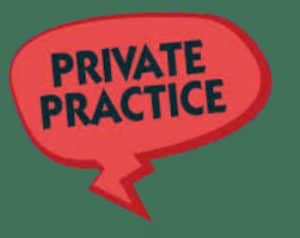Tips offered for leaping into private practice

Starting over. Leaving the security of a weekly paycheck and benefits. Relying only on your own ability to make it. It all sounds quite terrifying and it can be. But making the move to a private practice can also be the catalyst for re-writing a career, a lifestyle, and improving bottom line satisfaction. At least, this is how a group of therapists who recently made the jump presented their own life-changing decisions to leave behind a larger organization to strike out on their own.
Hosted by the American Psychological Association, the Taking the Leap into Private Practice webinar featured a group of clinicians discussing the steps they took, pitfalls to avoid and newfound freedoms they accessed when they decided to cut ties. The consensus? It is not a move to be undertaken lightly but one they do not regret, even when faced with a pervasive attitude that leaving a larger organization for private practice is somehow a “lesser” choice.
“As a clinician, I would think about where that messaging is coming from and remember that it’s you who gets to decide what counts as doing enough,” said Angela Lawson, Ph.D., a clinical psychologist in Illinois who struck out on her own in January 2024. “I do not know anyone who was sorry that they left. They were all happier.”
The decision of whether to change paths is, of course, extremely individualized to the person and the situation. For some, it is a matter of having more control over their schedules, career goals, or financial futures. For others, it may be about fine-tuning a speciality or working with a demographic with which they had not had access.
It can be nerve-wracking, leaving a steady income to dip a toe into uncharted waters, but taking advantage of the expertise of those who went before you can cut down on the actual levels of risk.
“I first had to decide that this was the path I was going to take,” said Lawson, “and then I reached out to my inner circle of colleagues about how they went about setting up their practice.”
Lawson gave herself a year to address some of the steps involved. She spent that time researching things like web designers and accountants, how to remain HIPAA compliant and the legal requirements for opening a business in Illinois. She examined established practices’ therapy rates, scheduling and onboarding systems, consent forms, note-taking apps, and more.
In setting up a new practice, there are business decisions to be made, from the cost benefits of renting office space versus offering remote-only therapy, to understanding the market in a specific specialty or geographic area, creating a website, or deciding whether to accept insurance for services.
There are also personal and lifestyle decisions to be made, from how many hours to work each week, to choosing a specialty, working with a higher need demographic, or donating time to the community through pro bono work.
Getting to make these decisions is one of the most important benefits but also challenges of being your own boss.
“Most of us go into field because we do want to support and help others,” said Lawson. “At the same time, it is a business you are running.”
After one year of planning and nearly two years in the field, is there anything Lawson missed in her preparation? On one hand, she said, she wished she had known how long it would take to adjust to the new role. She also did not realize how much time she would need for administration work, which she clocks at about two hours per week. Beyond that, though, her biggest question is why it took her so long to make the move.
“I wish I had known how much happier I would be in private practice,” she said. “I wasn’t certain how it was going to go and of course there is no way to know until you try it.”
